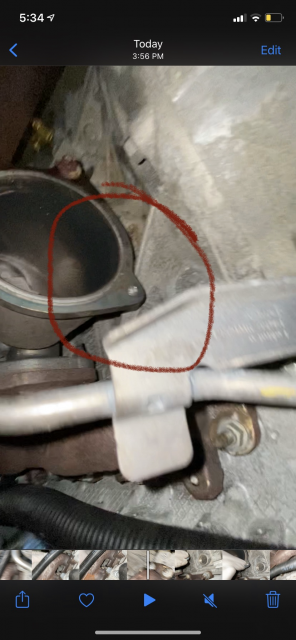I looked up videos of the stock turbo removal and it looks pretty easy but I’m concerned about another snapped bolt in the manifold.
The studs in the head tend not to break, I have only had one ever do so, and it wasn't from removing or installing.
To remove / replace the turbo you will need:
Consumables:
-Oil drain line gasket (you might also want to order the drain tube itself depending on how old it is).
-Coolant (you will lose about 1/2gal through the coolant lines to the turbo
-Oil feed line (you can re use your stock but I advise against it in case it kinks and falls apart internally)
-Exhaust manifold gasket (this is a two piece gasket, please just replace it)
Tools:
-Jack
-Jack stands
-Small Pry Bar (optional)
-8mm (socket)
-10mm (socket)
-13mm (socket & box wrench)
-15mm (deep socket 3/8th drive for the oil feed line)
-17mm (socket)
-T35 Torx Bit (for the oil drain line)
Abbreviated instructions:
-Remove headlights
-Remove wipers
-Remove Cowl
-Remove intake & crossover pipe
-Unplug wire harness from high pressure fuel pump & rear VVT solenoid, hang out of the way
-Remove 8mm bolt holding rear VVT solenoid to the head and remove VVT solenoid from the car (put this somewhere safe, do not drop it or mess up the connector)
-Remove 17mm banjo bolts from both coolant lines and move out of the way.
-Remove turbo heat shield (if not already done)
-Remove 8mm oil feed line bolt and pull feed line out of cylinder head
-Remove both T35 bolts that hold the oil drain line to the bottom of the turbo
-Remove 10mm downpipe bolts
-Remove downpipe stay bracket (13mm nuts), move exhaust / downpipe away from the turbo
-Unplug BOV and WGA solenoid wires from engine harness
-Remove 8 13mm nuts from exhaust manifold, leave the top center one on for now (these tend to come out with the studs, its fine)
-Have a friend or use your other hand to support the turbo/manifold assy when removing the last nut/stud
-Lift the turbo/manifold assy up and over the top of the engine. You will need to rotate it sideways and pull it out past the AC lines carefully.
-If replacing the oil feed line, do so after the bolt is fixed to avoid getting metal shavings into the line. Cover the holes for the coolant and oil drain as well while you drill out the bolt.
Like Typhoon said, it can be done in about 30 minutes on a cold engine with experience. Take your time to do it slowly and don't break anything else. Install in the reverse order of removal.
I don't think I missed anything.

